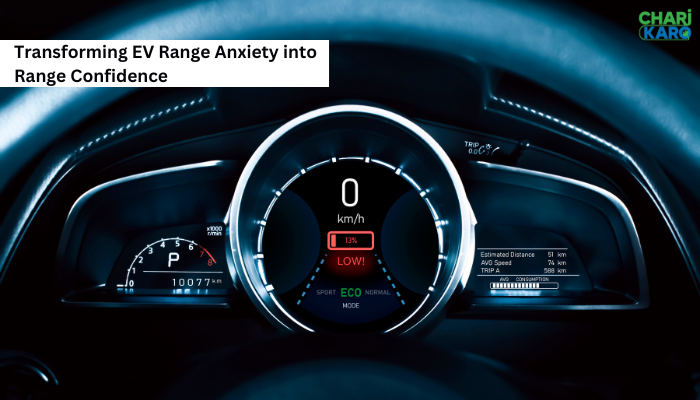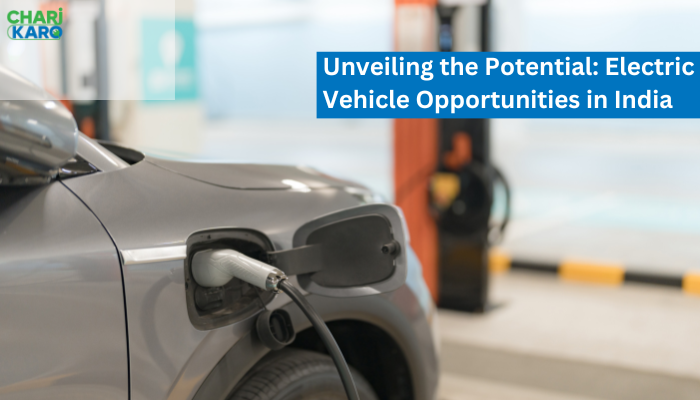Transforming EV Range Anxiety into Range Confidence

Understanding EV Range Anxiety and Range Confidence: EV Range Anxiety is the worry of running out of power and being stranded, while Range Confidence is the assurance of ample battery capacity. Modern EVs require less frequent charging with increased battery capacity. Expanded EV charging infrastructure at home, work, and on-the-go enhances range confidence. Level 2 charging facilitates home and work charging, while DCFC supports fleets and road trips. The EV market is a present reality.
“Embrace the Shift: The Electric Vehicle Market is Here!”
As the electric vehicle (EV) market gains momentum, worries about finding charging locations are fading fast. Discover what future EV drivers should know for a secure and confident driving experience.
What is EV Range Anxiety?
Initially, early electric vehicle users often grappled with 'range anxiety,' fearing their battery electric vehicles (BEVs) would run out of power. A Cox Automotive study showed over 80% of consumers hesitated to adopt EVs, citing concerns about range anxiety, possibly due to uncertainty about the technology. Acknowledging that BEVs are unfamiliar terrain, it's crucial to understand the entire EV network. Experts argue that range anxiety is largely psychological. Similar to drivers of traditional vehicles who differ in their frequency of gas station visits, EV drivers may adjust their charging habits based on personality and risk tolerance. A German study on psychological range highlighted that users tend to avoid stressful range situations by planning substantial range buffers. This concept is also relevant for conventional internal combustion engine (ICE) vehicles, but it is more critical for EV use. Fueling or charging involves monitoring and adapting vehicle usage, prompting drivers to establish personalized "buffers" based on risk assessment and self-awareness, ultimately reducing range anxiety.
Why Does Range Anxiety Persist?
Range anxiety, the fear of running out of battery power, has lingered despite advancements in electric vehicle technology. Understanding the reasons behind its persistence is crucial for the widespread adoption of EVs.
1. Psychological Aspect:
- Range anxiety is often rooted in psychological factors. - Studies suggest that, similar to traditional vehicle users varying in their gas station visits, EV drivers may exhibit diverse charging habits based on personality and risk tolerance. A German study highlights users' tendency to plan for substantial range buffers, reducing the impact of anxiety-inducing situations.
2. Comparisons with ICE Vehicles:
- Range buffers are present in both EVs and internal combustion engine (ICE) vehicles. - While range buffers are common in ICE vehicles, they are deemed more critical for EV users. Understanding this distinction is essential for addressing concerns and fostering acceptance of EV technology.
3. User Adaptation:
- Drivers must adapt their habits to alleviate range anxiety. - As fueling or charging an EV involves monitoring and adapting vehicle usage, drivers need to assess their own risk tolerance and create personal range buffers. This self-awareness and adaptability can significantly reduce range anxiety.
4. Technology Communication:
- Effective communication of technology capabilities is key. - Automakers and industry stakeholders should focus on transparently communicating the capabilities of EV technology. Clear information on range, charging infrastructure, and advancements can empower consumers and mitigate apprehensions.
5. Infrastructure Development:
- Expanding charging infrastructure is vital. - The continued development of an extensive and reliable charging network is fundamental to addressing range anxiety. Government initiatives, collaborations, and investments in charging infrastructure can significantly contribute to easing concerns.
How Expanding EV Charging Infrastructure Creates Range Confidence?
As electric vehicles (EVs) gain traction, addressing range anxiety becomes pivotal for widespread adoption. The key solution lies in the continuous expansion of EV charging infrastructure. Here's how the growing charging network plays a crucial role in instilling range confidence among EV users.
1. Increased Accessibility:
The proliferation of charging stations, both in urban centers and along highways, significantly enhances the accessibility of charging points. This increased availability offers EV drivers more options, alleviating concerns about finding a charging spot when needed.
2. Extended Range Coverage:
A broader charging infrastructure translates to an expanded range coverage for EVs. This means drivers encounter fewer situations where charging options are scarce, contributing to a greater sense of confidence, especially for long-distance travel.
3. Reduced Wait Times:
The growth in charging points leads to a reduction in waiting times. Improved charging density ensures quicker turnarounds at charging stations, enhancing overall convenience for EV owners and mitigating concerns about potential delays.
4. Technological Advancements:
Ongoing technological developments in charging systems improve efficiency and reduce charging times. These advancements not only contribute to the growth of the charging infrastructure but also boost the confidence of EV drivers in the reliability and speed of charging processes.
Embracing Confidence
As electric vehicles (EVs) become an integral part of the automotive landscape, the transition from range anxiety to range confidence marks a significant phase. This shift is driven by advancements in technology, the continuous expansion of charging infrastructure, and a growing understanding of the benefits of EVs. In this exploration, we delve into the current state of the EV market and how drivers are embracing confidence in their electric journeys.
Download CharjKaro App to get rid of Range Anxiety.

Cash ur Drive
Electric Vehicles pvt.LTD
Contact info
info@charjkaro.com
Location
1103, World Trade Tower,DND Flyway,
Sector 16 Noida,
Uttar Pradesh, 201301
Newsletter signup
Sign up to our monthly newsletter for useful articles, tips and tricks
Terms and ConditionsRefund Policy
© 2025 CharjKaro. All rights reserved.

